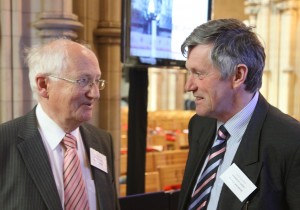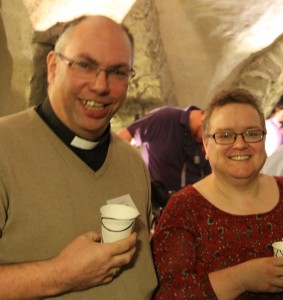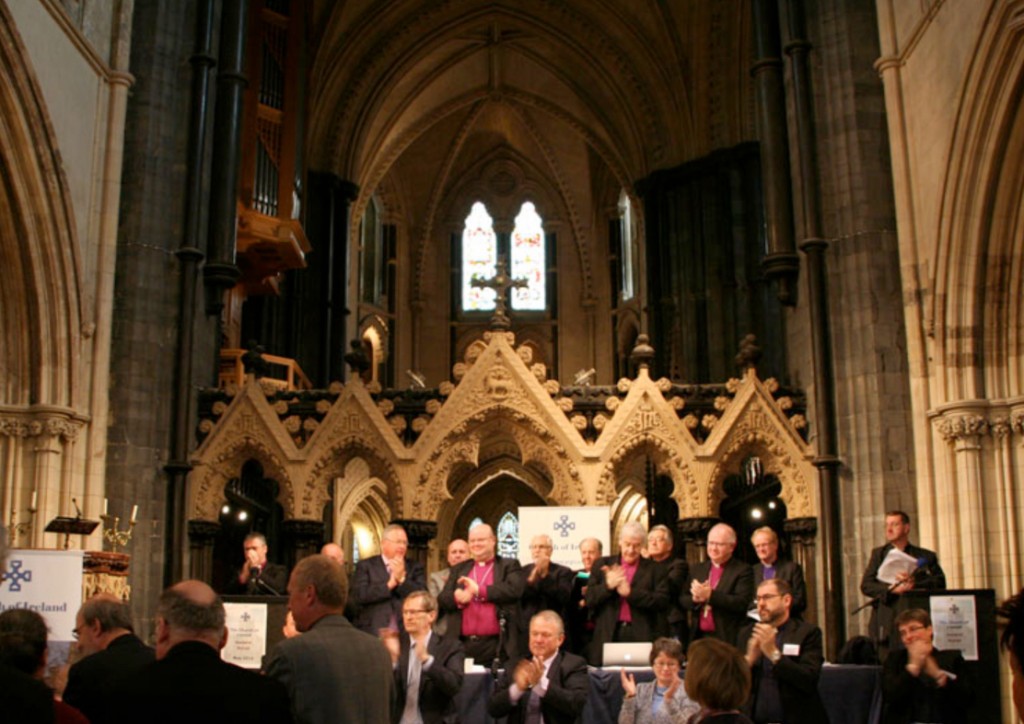
Synod Statistics announced show that 65% on day one attendance falls to 45% on Saturday, the third day, so perhaps the risk might taken that no day in any year will show more than 500? Members still talk about the General Synods held in the Lyrath Hotel in Kilkenny and in Galway when President Mary MacAleese visited.
There is always varied argument as to the best venue and opinion often revolves around the distance to be travelled, the cost, and the time off needed to be able to attend.
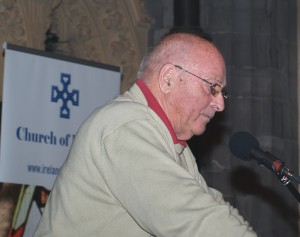 However, whatever about the restrictions of Christ Church Cathedral: parking, accommodation, catering and visibility within the church, it does create its own atmosphere. And it has been suggested that debate does not become as heated because of being in a church. Maybe so, it is certainly different!
However, whatever about the restrictions of Christ Church Cathedral: parking, accommodation, catering and visibility within the church, it does create its own atmosphere. And it has been suggested that debate does not become as heated because of being in a church. Maybe so, it is certainly different!
The speakers are well relayed around the building and there is a particular eerie quality up in the sanctuary behind the packed pews and the raised podium of bishops. Here in the vastness of the east end of the cathedral there is only the occasionally person scurrying to the Chapter Room where the Press Office is housed for the duration.
Echoing ethereally round the warm stonework and stained glass can be heard the disembodied voice at a microphone out front of a bishop or a member from the floor making their point. A perfect place to sit and tarry a while in solitude and contemplate the particular argument of the moment.
And then to lose the relay momentarily through the passageway to the IT Centre where Charlotte deftly and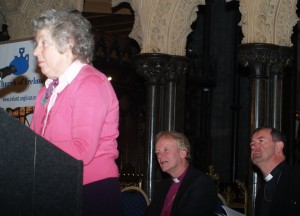 magically manages all the website and audio-visual wizardry and then into the Chapter Room itself where the smiling faces of Jenny Compston and Paul Harron are always ready to give a warm welcome to members of the press, reporting DCOs and anyone else who comes looking for information. Nobody leaves without the offer of coffee and refreshment.
magically manages all the website and audio-visual wizardry and then into the Chapter Room itself where the smiling faces of Jenny Compston and Paul Harron are always ready to give a warm welcome to members of the press, reporting DCOs and anyone else who comes looking for information. Nobody leaves without the offer of coffee and refreshment.
Lurking in dark corners can be seen various privileged members looking for a moment of quiet or a confidential conversation. Even the ‘odd’ bishop can wander in (they have their own episcopal den to dive down into, the most hierarchical of sanctuaries!)
But in the Press Room, computers are being furiously tapped, cameras casually being re-charged, all the while the relay from the debate continues to be heard. The Dean’s tall figure can be encountered overseeing matters of the cathedral with the staff and volunteers.
The COI Gazette personnel is prevalent with Canon Ian Ellis, the Revd Clifford Skillen and Ella McLoughlin all frantically gathering material for their special Synod Issue.
All this backroom activity is attractive enough without going near the actual business and raison d’être.
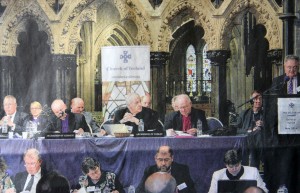
While this is all fine and well, but what of the business this year? And what of the input by Cashel, Ferns and Ossory? Below is simply a flavour of the overall and also specifically CFO!
There were two and half days of debate on six bills, 19 motions and umpteen reports making up the basis of this parliamentary procedure.
Bills
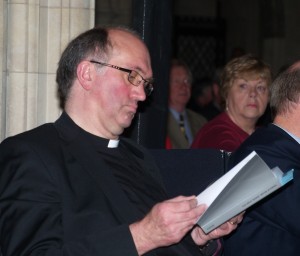 The first Bill, proposed by the Very Revd Nigel Dunne (Cork) and Bishop Burrows following the culmination of many years of dialogue to provide for full interchangeability of ministry between the Church of Ireland and the Methodist Church in Ireland, a moment of Church history in the making, and will be of relevance to ecumenical dialogue the world over. This was the most important decision taken during this Synod, drawing a standing ovation from the ‘house’ as the Bill was passed unanimously. It did not represent a ‘merger’ between the two Churches but allowed each to retain its own polity. While providing for ministerial interchangeability between the two Churches, the threefold order of ordained ministry remained fundamental in the Church of Ireland,
The first Bill, proposed by the Very Revd Nigel Dunne (Cork) and Bishop Burrows following the culmination of many years of dialogue to provide for full interchangeability of ministry between the Church of Ireland and the Methodist Church in Ireland, a moment of Church history in the making, and will be of relevance to ecumenical dialogue the world over. This was the most important decision taken during this Synod, drawing a standing ovation from the ‘house’ as the Bill was passed unanimously. It did not represent a ‘merger’ between the two Churches but allowed each to retain its own polity. While providing for ministerial interchangeability between the two Churches, the threefold order of ordained ministry remained fundamental in the Church of Ireland,
The second Bill, also passed unanimously, proposed to extend the term of office of the membership of the current Commission on Episcopal Ministry and Structures until 2016 – with provisions to deal with any current or future vacancies should they arise and to continue the process of identifying means by which a diocesan based and locally effective self-supporting ministry might be developed as a distinctive vocation. It was agreed that in consideration of these possible momentous changes, more time was needed.
Other bills, also passed, concerned the reconstitution of the Chapter of St Mary’s Cathedral, Limerick and a bill that 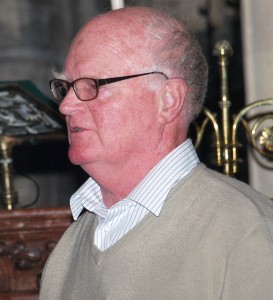 sought to consolidate statutes relating to the regulation and management of Down Cathedral.
sought to consolidate statutes relating to the regulation and management of Down Cathedral.
A Bill in the names of the Bishop of Cashel, Ferns and Ossory and Sam Harper (Cashel), proposed to amend provisions for the size of select vestries and remove the current upper limit of three persons under the age of 21.
The Bill would permit a Diocesan Council, where a cure was growing or changing, to draw greater numbers of parishioners into its governance. It could also allow a Council to facilitate enlarged select vestries to enhance participation in Church governance and administration in particular situations for specified periods. The Bill was passed unanimously.
Another Bill brought forward by Bishop Burrows and the Ven. Andrew Orr proposed to amend Chapter IV of the Constitution by obliging general vestries, from 2017, to appoint at least one man and at least one woman as parochial nominators and at least one man and at least one woman as supplemental nominators. However, this drew some criticism on being regarded in conflict with democratic rights of election and fell. Despite, as Archbishop Richard Clarke remarked, the fact that emergency aid was present, it would not serve to revive the fallen Bill!
Motions
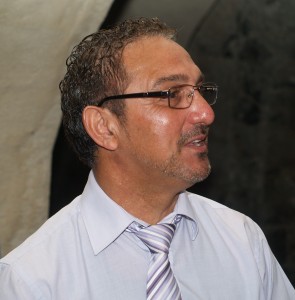 Among the Motions put forward included the re-affirmation of the importance of RE in Primary Schools (ROI).
Among the Motions put forward included the re-affirmation of the importance of RE in Primary Schools (ROI).
The ongoing discussions between the various third level institutions and CICE also received an airing. Here there is still unease as to the status of these two issues although there are some very encouraging and positive results in terms of the future safeguarding of the ethos of CICE.
The Synod was also encouraged to take ‘pride in its people’ and Bishop Burrows, who seconded the motion, praised the proposer, Dr Acheson, for his work on the history of the Church of Ireland and added that there are things to be ashamed of in the Church’s past. However, he added: ‘History is every bit as important as science in finding a gateway to the Divine.’ He reckoned that with this new communion between the COI and the Methodist Church, it would be appropriate for him to add that he had been educated in Wesley College where he recalled thinking both historically and religiously at the examination termed ‘the General’.
The debate was stirred by some perhaps different interpretations of the motions with regard to evangelicalism and gay and lesbian attitudes.
Reports
Within this sphere, the main Report was that of the RCB stating that the Church although still in deficit, has seen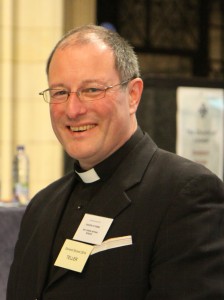 some financial recovery over the last year.
some financial recovery over the last year.
The Book of Reports also contained the first Report of the Select Committee on Human Sexuality in the context of Christian Belief. This, as was expected, attracted considerable debate from all points of view. The conclusion of which Synod exhorted the Committee to continue working, communicating and listening.
Proposing the report of the Council for Mission, the Revd Adam Pullen (Tuam) focused on the Council’s conference last March, thanking the Priorities Fund and the bishops for their support. The Ven. Andrew Orr (Cashel) reminded Synod that one of the marks of mission was the integrity of the environment. Canon Patrick Comerford (Dublin) invited participation in the tricentennial celebrations of Us. (USPG).
Bishops’ Appeal was headed up by Lydia Monds, Bishops’ Appeal Education Officer who reminded Synod that as long as the world’s poor were trapped in a cycle of hunger, worry and instability, then no one could be content. She sought to reassure Synod that Bishops’ Appeal continued to prioritise the allocation of Church funds in the most efficient and sustainable way possible, so that the funds reached the most vulnerable people and allowed them to live more fulfilled lives.
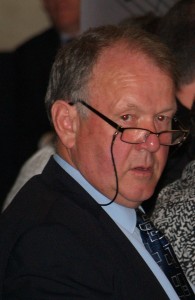 There was also a thread running through Synod concerning poverty at home, referred to by the Archbishop of Armagh in his presidential address and by others, highlighting the scandal of the increasing levels of poverty. Parishes were urged to tackle the issue of the ‘hidden poverty’ which is obvious through the work of Protestant Aid, and to which parishes were urged to support.
There was also a thread running through Synod concerning poverty at home, referred to by the Archbishop of Armagh in his presidential address and by others, highlighting the scandal of the increasing levels of poverty. Parishes were urged to tackle the issue of the ‘hidden poverty’ which is obvious through the work of Protestant Aid, and to which parishes were urged to support.
Lydia was, as ever, supported by Billy Kingston stating that there was a very prudent stewardship of funds.
The COI Youth Department gave its presentation. Bishop Burrows, among others from their dioceses, described the youth work being carried out in CFO.
With the three year contract up with Christ Church Cathedral, Synod would not be returning, although Bishop Burrows did remark that the ‘church’ atmosphere, a scared environment, cannot be matched by any hotel. Synod did not think that it should be permanently anchored in Armagh and although places of sufficient size for a full complement are scarce, other venues at reasonable cost should be explored. There was a vote of appreciation paid to the Dean, the Very Revd Dermot Dunne, for all his help and cooperation in the organisation from the cathedral. There did not seem to be an appreciable difference between the cost of the two venues.
Busy Bishop
It would be erroneous for this report to give the impression that the only speaker was our own bishop! However, he 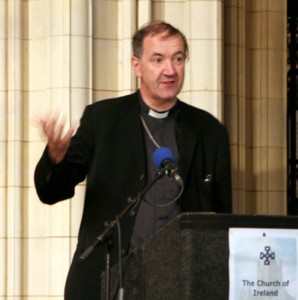 has been a busy man around the capital of recent days: he spoke at a special ‘man’s breakfast at St Ann’s, Dawson St on the Friday, conducted the service in Irish in the same church on 29th April and also preached at the Synod Eucharist on the Thursday where he recalled the confidence that had been inspired in the COI by successive Synod services.
has been a busy man around the capital of recent days: he spoke at a special ‘man’s breakfast at St Ann’s, Dawson St on the Friday, conducted the service in Irish in the same church on 29th April and also preached at the Synod Eucharist on the Thursday where he recalled the confidence that had been inspired in the COI by successive Synod services.
He said that they had conveyed a sense of the Church being ‘in good heart and in good health’ and suggested that nowadays there was an over-preoccupation with the notion that all was not well in the Church.
Bishop Burrows said that a Church that was in good health was a Church that talked about God in the public square.
He said that he longed for the Church in all its parts to be ‘a place of godly conversation’. Such open debate would ‘equip and intrigue and draw people in,’ the Bishop stated.
Competitions:
Cashel Ferns & Ossory had one winner amongst all categories and congratulations to Charity Vintage Tea Rooms 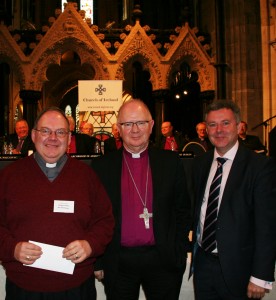 Facebook page -
St Mary’s, Dungarvan (Lismore) for the ‘most innovative social media development by a parish’
Facebook page -
St Mary’s, Dungarvan (Lismore) for the ‘most innovative social media development by a parish’
and accepted on behalf of everyone involved by the Revd James Mulhall.
It was interesting to hear the Rt Revd John Holbrook, Bishop of Brixworth* representing the Church of England saying that it was his delight to be speaking from the podium where the Rt Revd Pat Carey had taken her place and that he longed for the day when his own House of Bishops would be similarly complete.
The Red Chair!
Being the ‘baby’ of the House, Bishop Pat Storey opened the Synod proceedings each morning with prayer and liturgy, as is the tradition and the Archbishop took the Chair for most of the three days, other bishops could be seen usurping his position on occasion! The Bishop of Cork, suitably ensconced wondered how the Archbishop could remove him if he desired to remain in charge! The Archbishop on eventual resumption of his prime ecclesiastical seat, considered obtaining a Graham Norton ‘red chair’ for such insurgents and made move to pull the imaginary lever much to the delight and hilarity of the house. These moments of humour helps to lighten the heavy load of debate that the General Synod is obliged to carry and are much appreciated by all.
Business information – courtesy the Church of Ireland Gazette with permission.
The following photos show that the debate continued over refreshment!

